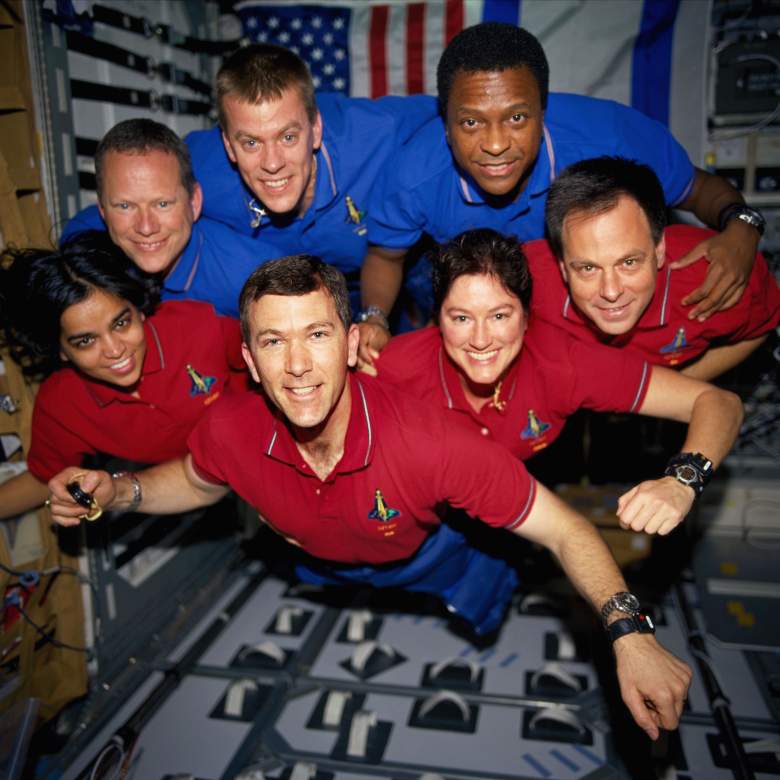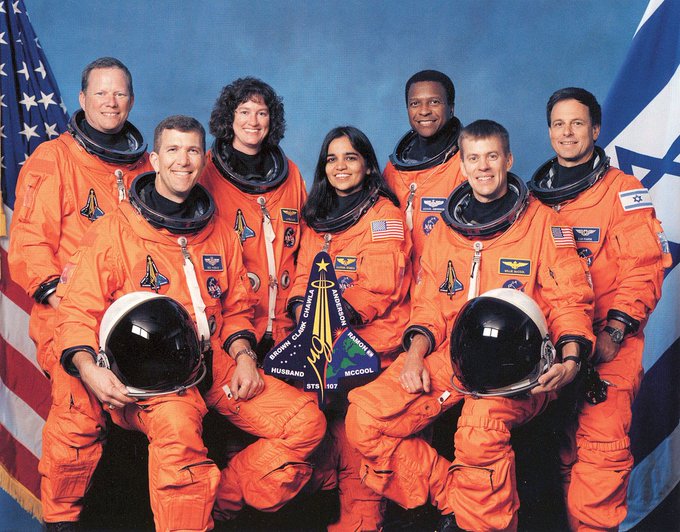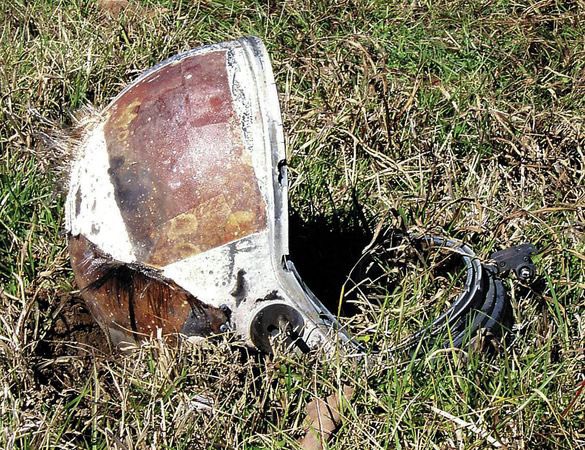
Getty In this handout photo from the National Aeronautics and Space Administration (NASA), the STS-107 crewmembers strike a flying pose for their traditional in-flight crew portrait in the SPACEHAB Research Double Module (RDM) aboard the Space Shuttle Columbia taken between January 16 and February 1, 2003 in space. From the left (bottom row), wearing red shirts to signify their shift's color, are astronauts Kalpana Chawla, mission specialist; Rick D. Husband, mission commander; Laurel B. Clark, mission specialist; and Ilan Ramon, payload specialist. From the left (top row), wearing blue shirts, are astronauts David M. Brown, mission specialist; William C. McCool, pilot; and Michael P. Anderson, payload commander. Ramon represents the Israeli Space Agency. On February 1, 2003, the seven crewmembers were lost with the Space Shuttle Columbia over North Texas. This picture was on a roll of unprocessed film later recovered by searchers from the debris.
It has been nine years since NASA’s most recent tragedy, when the seven crew members of space shuttle Columbia died as they reentered the atmosphere over north Texas February 1, 2003.
The astronauts killed were Kalpana Chawla, mission specialist; Rick D. Husband, mission commander; Laurel B. Clark, mission specialist; and Ilan Ramon, payload specialist, David M. Brown, mission specialist; William C. McCool, pilot; and Michael P. Anderson, payload commander. Ramon represented the Israeli Space Agency.
Follow the Heavy on Houston Facebook page for the latest Houston news and more.
Here’s what you need to know:
Space Flights Were Suspended for Two Years While NASA Investigated the Cause of the Columbia Disaster
The Columbia disaster led to the suspension of space flights for two years while NASA investigated what caused Columbia to break apart upon reentry. It was the first space disaster in 17 years, since the Challenger explosion on January 28, 1986. According to Space.com, it was a large piece of foam that caused the catastrophe.
“An investigation board determined that a large piece of foam fell from the shuttle’s external tank and breached the spacecraft wing. This problem with foam had been known for years, and NASA came under intense scrutiny in Congress and in the media for allowing the situation to continue,” Space.com reported.
The problem started 82 seconds after Columbia’s liftoff, Space.com reported. A video from the launch appeared to show the foam hit the space shuttle’s left wing, and it was later determined there was a hole in the wing that allowed gases to seep into the shuttle during re-entry.
“Several people within NASA pushed to get pictures of the breached wing in orbit. The Department of Defense was reportedly prepared to use its orbital spy cameras to get a closer look. However, NASA officials in charge declined the offer, according to the Columbia Accident Investigation Board (CAIB) and “Comm Check,” a 2008 book by space journalists Michael Cabbage and William Harwood, about the disaster. The landing proceeded without further inspection,” Space.com reported.
A Dallas News Station Broadcast Live Video of Columbia Breaking Apart
Columbia’s last transmission came as the space shuttle flew over Dallas just before 9 a.m. The transmission was cut off, and 12 minutes later, mission control received a phone call that a news station was broadcasting video of the shuttle breaking apart in the sky.
While mission control worked to contact the Columbia crew, a Dallas news station was broadcasting a live image of Columbia as the space shuttle broke apart.
“It looks like you can see pieces of the shuttle coming off,” the WFAA anchor says in a live broadcast.
The anchor says the shuttle was supposed to land in Florida. At the time, NASA had only confirmed that the space shuttle was behind schedule.
The anchor says on the live broadcast it is typical for return missions to appear in the north Texas sky on its way to Florida, and it was immediately clear that something was wrong when the news station’s photographer shot footage of the shuttle. The space shuttle was traveling 12,000 miles per hour at 200,000 feet when NASA lost contact with the crew, officials told the news outlet at the time.
The space shuttle completed 27 successful launches beginning in April 1981. The Columbia program was mainly focused on building the International Space Station, Space.com reported. But Columbia’s final mission was research. The astronauts were completing experiments 24 hours a day, working in two shifts. In total, they performed about 80 experiments including in life sciences, material sciences and fluid physics, Space.com reported. The astronauts spent 16 days in space.
READ NEXT: Today in Houston History: Mars Opportunity Rover Dies Feb. 13, 2019

